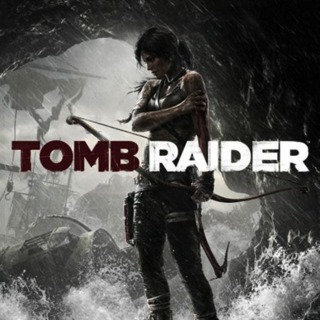A shining example in how to do a successful reboot.
Being a reboot, the game casts you as a young Lara Croft setting out on her first adventure. Lara and the entire crew of the ship The Endurance are shipwrecked on the island of Yamatai and as Lara you must uncover the islands mysteries, defeat a crazed cult and find a way to escape. All in all the plot and characters are pretty generic with some clichéd dialogue at times but it is the strength of characterisation put into Lara that stands out. She begins as a naive and frightened girl but over the course of the game develops into a strong and confident woman willing to do whatever it takes to survive. Her character development is handled well and is the stand out feature of the game. Most games allow you to advance in terms of abilities and weapons but it is rare for a developer to attempt such a degree of character development. Crystal Dynamics have pulled it off though. This is helped by capable voice performance by Camilla Luddington as Lara. Of course Lara also advances in terms of abilities which are earn using skill points and weapons which can be upgraded using salvage. Just like with the development of Lara's character these are satisfying. They also enable more tasks to be completed and improved combat capability but crucially without making the game too easy as you progress.
Gameplay can be split into three main types. Firstly there is combat. Whilst not groundbreaking the cover system is well implemented and useful in what are some pretty intense firefights at times. The enemy AI is competent too with foes hiding behind cover and making themselves difficult to take down. The combat is very much like that of the Uncharted series, which Crystal Dynamics have clearly taken a number of cues from for this reboot. This can be seen in the second type of gameplay, the exploration and platforming. Lara is just as acrobatic as Nathan Drake and makes use of whatever she can to climb and explore. Jumps and climbs are easy to perform and satisfying to pull off. In another cue taken from the Uncharted series, the scenery will often collapse as Lara climbs it, leading to a scramble to hang on and grab something else. This forms part of the game's edge of your seat tone. Set pieces abound and the game maintains a fast pace as Lara rushes to escape collapsing buildings, is swept down rushing rivers and much more. This lends the game a strong cinematic feel with Lara as the heroine of the piece. The fast pace works well due to the strength of its execution but at times it could do with slowing down. This pace is occasionally broken up the third gameplay type; puzzles. I was disappointed by the lack of puzzles in the early stages of the game and whilst they do increase in number as it progresses, I still would have welcomed more to slow the game's breakneck pace at times. The puzzles that do exist require some thought but none are likely to leave you stumped for long. Overall I feel the gameplay balance is about right though and the difficulty is appropriate too. An omission that fans of the franchise might find hard to take is the lack of tombs. There are seven, short optional tombs, hidden away to find but none that are compulsory for completion. This doesn't detract from the game's quality but existing fans could be left disappointed. It is worth noting though that despite its fast pace and lack of tombs the game is surprisingly lengthy, clocking in at over ten hours.
Graphically, Tomb Raider is not spectacular but it is a good effort. The dark colours and foreboding locales instantly set the island out as a place to be feared and lighting is effectively used to enhance the sense of unease. The music is well chosen and complements the graphical choices in making you truly believe that this is a scary place that Lara is desperate to escape from. In addition to the use of sights and sounds to create a dangerous atmosphere, the game includes a large number of collectibles that flesh out the islands backstory. These are genuinely compelling to discover and extend the games already generous run time. Relics reveal the islands physical history whilst documents are used to portray the experiences of individuals who have previously had the misfortune of ending up on Yamatai. I often find collectibles to be in a game simply for the sake of making it seem to have more value but the Documents and Relics as well as GPS caches (which reveal two secret documents if you find them all) actually complement and enhance the story of the game. Tomb Raider also features online multiplayer in an attempt to further enhance the experience. It is a woefully lacklustre though. Lag is commonplace and it is quite simply boring. As an additional feature that is entirely separate of the main game it can gratefully be ignored though and does not detract from what is a top draw adventure.
Multiplayer aside, Crystal Dynamics' reboot of the Tomb Raider franchise has done what it set out to. It successfully reinvents Lara Croft with a strong level of character development and a fast paced adventure full of memorable moments. Tom Raider has been brought up to date and whilst it may take many cues from the Uncharted series it stands out as a fantastic game in its own right and re-establishes Lara Croft at gaming's top table.

